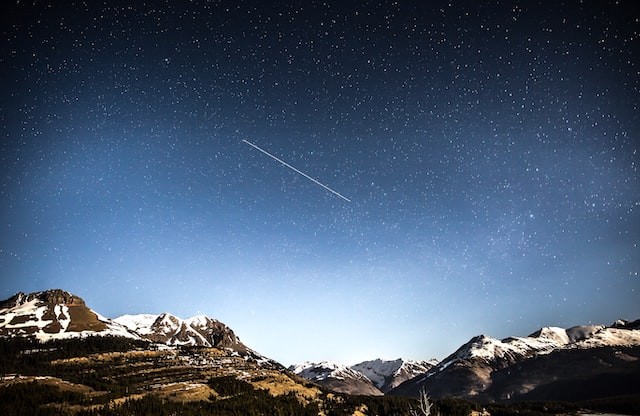Countless asteroids have struck Earth, leaving behind enormous craters that have scarred the blue planet's surface.
One prevalent theory is that the continents of Earth were formed by massive meteorite impacts, which occurred frequently over the course of our planet's four and a half billion-year history and were especially common during the first billion years.
A new study has provided the strongest evidence available for this theory.
Giant meteorites create continents
 (Photo : averie woodard/Unsplash)
(Photo : averie woodard/Unsplash)

The theory that the continents were first created at the sites of massive meteorite impacts has existed for a while, but up until now, there hasn't been much evidence to back it up, according to Dr. Tim Johnson of Curtin's School of Earth and Planetary Sciences, as per ScienceDaily.
Their work offered the first convincing proof that massive meteorite impacts, comparable to those that wiped out the dinosaurs but billions of years earlier, were the starting point of the processes that eventually formed the continents.
Zircon crystals' oxygen isotope composition analysis revealed a top-down process that involved the melting of rocks close to the surface before moving deeper.
This process is consistent with the geological impact caused by massive meteorites.
Given that all these landmasses are home to the vast majority of the planet's biomass, all humans, and nearly all of the planet's significant mineral deposits, Dr. Johnson said it is crucial to comprehend how the continents formed and are still evolving.
The formation of the earliest landmasses, of which the Pilbara Craton is only one, and the subsequent crustal differentiation process are what lead to mineral deposits.
The information pertaining to other regions of the Earth's ancient continental crust appears to reveal patterns resembling those found in Western Australia.
To see if, as they suspect, their model is much more broadly applicable, the experts would like to test their findings upon old rocks.
Also Read: Astonishing Discovery Buried in Meteorites From 500 Million Years Ago
Destructive asteroids recorded in the history
According to experts and scientific researchers, 60 asteroids or comparable objects that were at least three miles in diameter struck the earth in the last 600 million years, as per World Atlas.
The extinction event of life on Earth has been attributed to three terrestrial ground impact events.
Additionally, there is evidence of oceanic effects.
There has frequently been discussion about whether or not ocean impact events could result in a mega-tsunami instead of just a mantle plume (volcanism).
The following asteroid impacts left behind enormous craters and could have an impact on earthly life.
The vast 118.061-mile-radius Vredefort Crater in the South African province of Free State is first on the list; it was formed 2 billion years ago.
The Sudbury Basin in Ontario, Canada, with a radius of 80.7783 miles, which was struck 1.8 billion years ago, comes in second.
The 55.9234-mile-radius Acraman Crater in South Australia, Australia, which was created by an impact with Earth 580 million years ago, comes in third.
The fourth is the 360 million years old Woodleigh Crater in Western Australia, Australia, with a 25-74,5645-mile radius.
Fifth is the Manicouagan Crater, which has a radius of 62.1371 miles and was created in Quebec, Canada, 215 million years ago.
The Morokweng Crater, which has a radius of 43.496 miles and was created in North West, South Africa, is ranked sixth. The Kara Crater in Nenetsia, Russia, with a 40.3891-mile radius, came in seventh 70.3 million years ago.
The Chicxulub Crater, located in Yucatan, Mexico, has a radius of 106-186.411 miles and was formed 65 million years ago.
It is known that the mass extinction that occurred on earth at the time was brought on by this specific impact event. The Popigai Crater in Siberia, Russia, with a 62.1371-mile radius, which was struck 35.7 million years ago, comes in ninth.
The 52.8166-mile-radius Chesapeake Bay Crater in Virginia, United States, which struck 35 million years ago, the tenth is mostly on the list but equally destructive.
Related Article: NASA to Search Again for Antarctic Meteorites
© 2024 NatureWorldNews.com All rights reserved. Do not reproduce without permission.



![Climate Change is Reducing Dust Levels Worldwide as Arctic Temperature Warms [Study]](https://1471793142.rsc.cdn77.org/data/thumbs/full/70320/280/157/50/40/climate-change-is-reducing-dust-levels-worldwide-as-arctic-temperature-warms-study.jpg)

